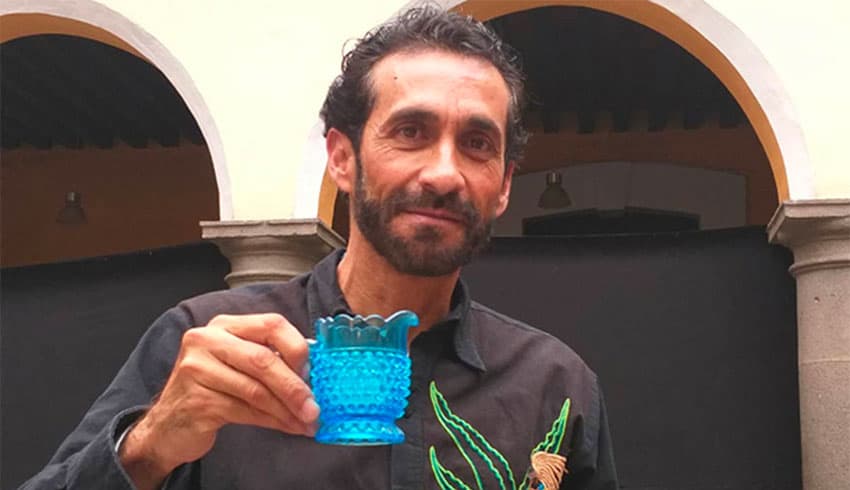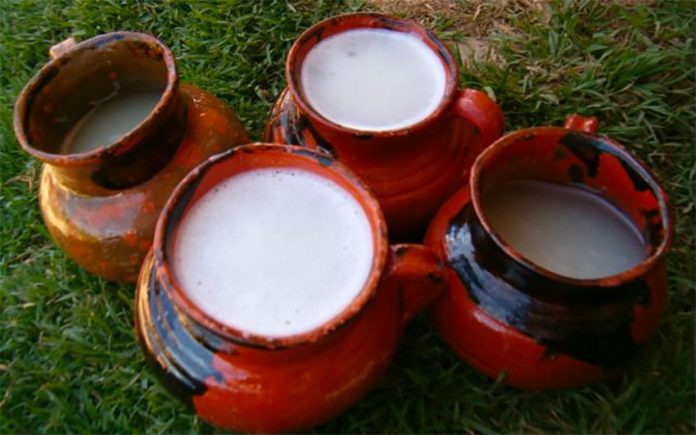The world’s first museum dedicated to pulque is planned for the city of Puebla.
The basis of this museum is the private collection of pulque paraphernalia belonging to Javier Gómez Marín, over 8,000 pieces and a library of 4,500 titles related to the beverage, its making and its history.
The new museum will be found in an old mansion in the historic center of the city and although it’s not yet open, this collection already has a history of being loaned for exhibitions and other events.
Gómez’s collection includes watercolor paintings, photographs, postcards and even a short film done by Adolf Hitler’s filmmaker Hubert Schonger. It contains the vessels and implements used for the making of pulque, from the gourd used to extract the maguey sap to vats and transport jars.
Perhaps most importantly it contains myriad pitchers, jars and mugs used for the consumption of the beverage, traditionally done in pulque bars called pulquerías. These receptacles come in a variety of materials and styles and have an artisanal history all their own. Depending on the region, pulque mugs come in green glass, ceramic and even cut and painted gourds. Many in Gómez’s collection depict aspects of Mexico’s history and culture, and most come from old pulque haciendas in various parts of the country.
Pulque is a mildly alcoholic beverage made from the sap of several agave species known as maguey, rather large plants that grow on much of the Central Mexican Plateau.
Pulque making and consumption go back far into the Mesoamerican period, about 8,500 years. By the Aztec period, its consumption was strictly limited to certain rituals and festivals, almost exclusively to the upper class.
After the Conquest, pulque lost its sacred status and became a beverage of the lower classes for its alcoholic content and as a food staple. From the colonial period to the early 20th century, pulque haciendas could be found in Hidalgo, Tlaxcala, Puebla, Morelos, Michoacan and Querétaro. At one point, colonial authorities tried to ban pulque due to alcoholism among the indigenous, but this proved impossible to enforce.
Pulque enjoyed its height at the end of the 19th and beginning of the 20th century, just before the Mexican Revolution. During that time, the “king of pulque” was a man named Ignacio Torres Adalid because he had 500 haciendas producing maguey and an equal number of pulque bars in the country, accounting for 80% of Mexico’s production at that time.
After the Revolution, haciendas were broken up and government authorities discouraged the drinking of pulque. But the main threat to the drink came from the introduction and promotion of beer, touted as modern, more hygienic and healthier. It became and remains the most popular alcoholic beverage in the country.
Eighty percent of the pulque now produced comes from the state of Hidalgo, but only 4.4% of the population consumes it.

However, in the past two decades, the drink has experienced something of a comeback. It has gained a reputation as a specialty beverage and today there are over 100 pulquerías in Mexico City alone. These range from seedy dives that survived pulque’s lost years, to new trendy places in exclusive parts of the city.
Meanwhile, the manner of producing pulque has remained unchanged since the Mesoamerican period.
Before fermentation, the liquid is known as aguamiel. The fermented liquid is white, slightly viscous and acidic with an alcohol content of about 6%. Fresh batches of pulque are produced by adding already fermented liquid into a fresh vat of aguamiel. It is consumed as is (known as natural) or mixed with fruit or other flavorings (called curado).
One issue with pulque production is that the flora is not easily killed off by the alcohol they produce as they are in the production of beer and wine. For this reason, pulque can “overferment,” spoiling it, so it must be consumed within a short time. This is one reason for the curado version, to disguise any adverse flavors that may have already started to form.
Good pulque should have the color and viscosity of pasteurized milk and should have a very slight smell or none at all. It is slightly acidic and may contain a hint of carbonation. Pulque that is going bad smells sour, becomes more viscous and begins to separate. Bubbles can be seen on its surface.
The difference between drinkable and non-drinkable pulque can be only hours, which severely limits where and how pulque can be commercialized. Although good pulque can be had in reputable pulquerías in cities, the best locations for their consumption are near where it is made.
Interestingly, pulque has nutritional and other health benefits no other alcoholic beverage does. In addition to calories, it provides protein, thiamin, riboflavin, niacin, vitamin C, calcium and iron. For certain indigenous groups such as the Otomí in Hidalgo, the consumption of pulque can be important in the diet. In many pulque drinking areas, the common saying is that pulque is one step away from eating meat.
Sources: La Jornada de Oriente (sp), El Universal (sp)
